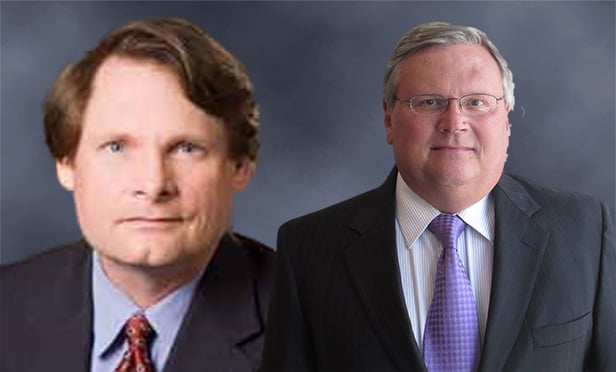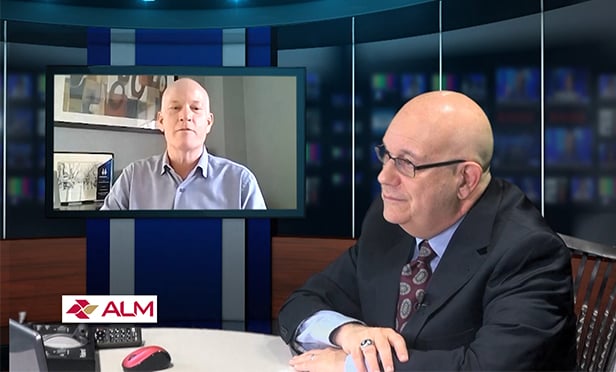Whether driven by altruism or concerns about the bottom line, environmentally conscientious design has become prevalent in commercial development today. Thanks to organizations like the US Green Building Council with its Leadership in Energy and Environmental Design program and the American Society of Heating, Refrigerating and Air-Conditioning Engineers, which promotes sustainable elements in HVAC systems, along with the availability of green products and resources, many in the development sector are more aware of and comfortable with implementing green practices.
Consequently, the USGBC has seen a rise in the number of projects seeking certification through its LEED ratings system, a guideline for sustainable building design that offers third-party validation of a building's green features. According to the Washington, DC-based organization, there are currently 5,562 LEED-registered projects and 735 LEED-certified buildings in the US; that compares to just 635 registered developments and 38 certified buildings a mere five years ago.
Since then, a number of studies have been published on the benefits of green building—better air quality, improved worker productivity, energy and water conservation and lower operating and maintenance costs among them.
"The reality a couple of years ago was that green buildings were somewhat risky to do because there were not that many people with the technical skills to execute it nor many good examples to model after," explains Gregory H. Kats, managing principal at Capital E, a clean energy advisory firm based in Washington, DC. "But that has all changed. Now, there are over 35,000 LEED-accredited professionals. There is 750 million sf—about 5% of non-residential construction—in some process of going green, and there are hundreds of completed LEED buildings to learn from."
Still, he notes, some industry players aren't completely sold on the approach because "perception lags reality when it comes to green building." Yet a lot of the misconceptions and stumbling blocks that long kept developers from going green are beginning to fade away.
It's Too Darn Expensive!
While the green movement has certainly taken off in recent years, it's often believed that sustainable design is exceedingly more expensive than conventional development. One of the most recent and widely referenced studies in the field, Capital E's 2003 "Green Building Costs and Financial Benefits," addressed the issue by comparing the cost of 33 green buildings throughout the US with the expense of constructing the same structure using traditional methods. The report determined that in fact, the average premium to build green was slightly less than 2%, or $3 to $5 per sf. The majority of this cost differential, Capital E reports, was due to the increased architectural and engineering design time, modeling expenses and time necessary to integrate sustainable building practices into these projects.
Many of these concerns have since been put to rest as the proliferation of green practices has allowed for the streamlining of these processes. Rod Wille, senior vice president and manager of sustainable construction for Turner Construction Co., notes that as architects and contractors got over the initial learning curve, costs have steadily declined. One example, says the Sacramento-based executive, is one of his company's current residential projects, the Visionaire, in the Battery Park City section of Manhattan. "This is our third green project for the Albanese Organization Inc. and the cost keeps coming down because we—architect Rafael Pelli included—are learning," observes Wille.
The 251-unit tower, scheduled to debut in June 2008, has an array of green features, including an air filtration system, Energy Star appliances and a photovoltaic solar power system to generate electricity for the building. Albanese is seeking LEED Platinum certification for the development, adds Wille.
Another point of contention for some in the industry has been the costs involved in the LEED certification process. But as with design and construction, the expense of documentation has declined some, especially as the process has gone electronic, notes Kats. But more importantly, with the growing number of LEED-accredited professionals, competition has heightened, naturally driving down costs, he says. "If you go to a city like Cleveland, you might have 100 LEED-accredited professionals. Now you have a lot of choices and there isn't anyone with a monopoly," emphasizes Kats, adding that the cost of going through the compliance process continues to decline.
What's more, developers are starting to view the premium for LEED certification as just another cost in the overall development. Take, for instance, Hines and its 670,000-sf office building in Midtown Atlanta, 1180 Peachtree. The project, which came on line a year ago, was the company's first core-and-shell LEED-certified building. According to Mary Hill, vice president of construction at Hines and the construction manager on the site, "We spent about $150,000 on certification. Of that, $110,000 was for the consultant, who had to verify and certify all of the points that we pursued, put the package together and submit that to the USGBC."
On a $100-million building, she says, that kind of expense is not a significant premium. In the end, the 41-story tower became the first high-rise in the Southeast to obtain LEED Gold status.
In spite of the project's successful application, Hines did experience some challenges along the way, according to Hill. When the firm enrolled in the LEED program, the project was already under construction. So the development team, which included Turner, had to make sure the existing design and the materials that had been used so far met compliance standards, which they did. The team ended up making only two alterations, both of which, Hill says, were aimed more at creating a responsible design than meeting LEED standards. The roofing material was switched to a derby bright membrane and the underground detention vault was enlarged to store more water, all for a cost of $50,000.
Generally, according to the Capital E study, the earlier green building features are incorporated into the design process, the lower the costs. The study also notes that the trend of declining costs correlates to the construction team's experience level in green building, which has led to a drop in the overall expense. In Seattle, for example, the cost of developing LEED Silver buildings dropped from 3% or 4% several years ago to 1% or 2% in 2003. Kats, who authored the study and is currently working on a revision due out at the end of this year, says the same is true throughout the country today. "Nationally, the average premium on standard LEED certification is between zero and 0.5%; LEED Silver is between 1% and 2%; LEED Gold is around 2%; and LEED Platinum is somewhere between 3% and 7%," he says.
What's in it for Me?
Primarily, the financial benefits of going green are enjoyed by building owners, operators and tenants. So where does that leave the developer? In recent years, federal, state and local jurisdictions have answered that question in the form of incentives.
States are also making more of an effort to attract eco-friendly development. According to the USGBC, Maryland, Nevada, New York and Oregon all have some form of tax breaks for sustainable commercial development. Maryland, for example, provides a tax credit worth up to 8% of the total building costs. Under the law, the structure must be at least 20,000 sf and be located in a priority funding area or qualified brownfield site. The tax credit uses LEED 2.0, 2.1, EB, CS and CI as standards for determining a sustainable design.
In Oregon, the state offers a 35% Business Energy Tax Credit for sustainable buildings that achieve LEED Silver certification or higher. The amount of the credit is commensurate with the size of the project. For instance, a 100,000-sf, LEED-NC Silver building would be eligible for a $140,000 tax credit.
A few big cities have also taken a stance in the green movement, with proposed mandates that require private developers to adhere to sustainable design methods. Washington, DC started the ball rolling in December 2006 when it became the first major city to pass a bill that calls for all commercial development of 50,000 sf or more to meet LEED standards starting in 2012. Included in the legislation is a provision for grants to help defray some of the costs associated with the early adoption of green building practices. Exact amounts are yet to be determined. Officials in Boston, meanwhile, have also offered up green building legislation lined with tax incentives. While the buildings don't have to be certified, they do have to adhere to certain LEED standards.
Additionally, some jurisdictions are more likely to look favorably on green projects versus traditional ones, particularly during the entitlement process, relates Tom Shaver, vice president of real estate development for Opus Northwest LLC in Minneapolis. "Many times it's easier if you tell them early on that you are pursuing sustainable design and certification on the project," he says. "The city streamlines the process." In fact, several municipalities in Florida, California and Washington promote green building through the accelerated expedition of permit applications.
Are Materials Readily Available?
Though green building materials have been around for decades, the pool of suppliers has been relatively small. But as the demand for sustainable building has grown, so has the market for these products. In fact, the USGBC projects that the products and services industry for green building will exceed $12 billion this year. That compares with $5.8 billion in 2004.
Turner's Wille has observed the growth on the supply side, noting that it's getting easier for developers to obtain materials. "Even a year or two ago, there were less products available and some of them were proprietary. Now, major manufactures are carrying green lines or products," he explains, "and there are smaller start-up companies that are making them as well. We're finding that products are becoming more available and less costly as a result."
In terms of availability, Sandra Leibowitz Earley, founder of Sustainable Design Consulting in Richmond, VA, agrees that there is definitely a greater quantity of retailers and products. But she suggests that the problem wasn't so much a dearth of materials but a lack of knowledge on the part of builders. "Five or 10 years ago, there were building materials available, but for the builder inexperienced with green specifications, they didn't know where to look," she says. Now that all major construction firms have at least one or two green projects under their belts and are dealing with LEED guidelines, they are more aware of the resources available to them, she says.
"To some extent, green building suppliers are still geared toward the consumer," she points out, "but they can absolutely provide resources for commercial projects." Leibowitz Earley notes that more construction sales representatives are becoming well versed in sustainable materials, and some are even specializing in the sector.
Dan Young Dixon, director of design for Opus Architects & Engineers Inc., notes that green materials is probably one of the largest new markets around. "Almost all large manufacturers of building materials have some form of green product; most validate their materials and supply information that support sustainable design or building green," says the Minneapolis-based executive.
Elements such as green roofs, for example, have come a long way, notes Wille. "People are now fairly comfortable with them and their benefits and maintenance. Other things like photovoltaic panels are becoming much more commonplace as well. In fact, there is currently a worldwide shortage of photovoltaic modules as a result of people's increasing comfort levels with them."
Does Green Matter to Tenants?
Sustainable elements are also seen as a plus to many staffers. "Employees embrace green design because there is a substantial health benefit, specifically, the indoor air quality and safe and healthy materials that are used in the interior of sustainable-designed buildings. So there is a definite advantage and benefit to the employee to work in a space like that," says Young Dixon.
Beyond the health benefits and improved employee productivity, tenants are certainly drawn to green space because of the potential to reduce their operating expenses. "Clearly, gas prices have surged, as have electricity prices. So if you reduced your energy use by 35% or 40%, which is typical of LEED buildings, you're reducing your exposure to future price fluctuations," explains Capital E's Kats.
A strong market preference, he says, is beginning to emerge, with indications that people are willing to pay more for living or working in a green building. In fact, Turner's Wille says that one of his clients, Hines, which has made LEED standards a requirement for all of its equity-invested buildings, has, to his knowledge, had an easier time preleasing and obtaining higher rents at its green developments.
While Hines' Hill won't specifically say that 1180 Peachtree achieves higher rents as a result of its LEED certification, she admits that it certainly played a factor. The executive maintains that tenants who are environmentally conscious are naturally attracted to LEED-certified buildings such as 1180 Peachtree, which is currently at 88% occupancy. Allsteel, for example, specifically sought tenancy at the tower because of its LEED certification, she says. "They got a tremendous head start in pursuing their own certification for the commercial interiors for their space." In September 2006, Hines sold the building, which it still manages, to an affiliate of the General Electric Pension Trust.
The Choice is Yours
For many at the forefront of the green building movement, the proliferation of eco-friendly projects is merely a result of developmental pragmatism. Particularly as more space users and municipalities demand sustainable projects, it will ultimately become the norm in the industry, many observers maintain.
Kats, for one, suggests that given the health and environmental costs associated with conventional development, if people are presented with an alternative, they will likely gravitate to it. "People now have a choice between healthy and unhealthy buildings, efficient and inefficient buildings, green and non-green buildings," says Kats. "What are they going to choose?"
© 2025 ALM Global, LLC, All Rights Reserved. Request academic re-use from www.copyright.com. All other uses, submit a request to [email protected]. For more information visit Asset & Logo Licensing.







